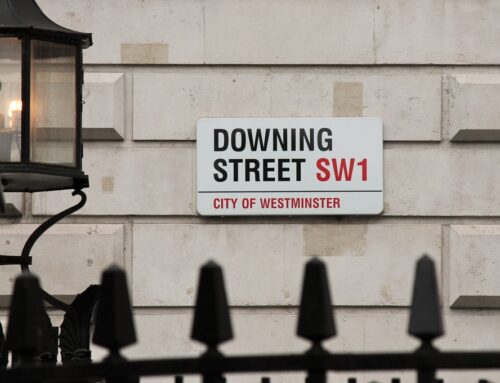The bad news: there are thousands of presentations every day, everywhere around the world. Most of them use Power Point, badly, as speaker notes, with more words or numbers on each slide than anyone can read.
The results are predictably boring – no, excruciating — for their hapless audiences. That’s human misery on a massive scale.
The good news: in an effort to make the world a better place, here are 10 things to do instead of Power Point. Ways to make your points without the sleep-apnea-inducing effects of boring slides. Ways to pep up your presentations without much additional effort. Your audiences will thank me.
1. Use props. For most workers, in a cubicle world, it’s sensory deprivation from 9 – 5. The whirr of computers and the A/C. The hum of colleagues chattering away. The beige walls of the cube farm. The fluorescent lighting. It’s amazing anyone stays awake. Offer the audience, then, something physical. Instead of describing that new product on a slide, show them a prototype. Pass it around. Let the audience get physical.
2. Use music. We have an emotional response to music which is much more powerful than we do to most words. Especially words like “3rd Q results” and “product optimization.” So add a soundtrack to your presentation. It will bring it to life. Do obey copyright and licensing laws, please.
3. Use video. Video –good video — has all the life in it that static slides lack. A good clip can enchant, move, and thrill and audience in 60 seconds. You can create the right emotional atmosphere to begin or end a speech – or to pick it up in the middle.
4. Use a flip chart. Create any visuals you need right there in front of the audience. No need for technology. Just a magic marker and your arm. The act of creation draws the audience in where a slide doesn’t.
5. Ask the audience. Of course, the best way to draw the audience in is to draw them in. Ask them to tell you their stories – as they relate to the topic at hand. Ask the whole audience or just selected volunteers.
6. Ask the audience – 2. Break the audience up into small groups and get them to respond to a challenge that you set, a question that you ask, or a problem that you pose. Then have them to report back to the whole group.
7. Ask the audience – 3. Play a game with the audience – relevant to the topic. Award prizes. Audiences love to compete. Just don’t make the questions too difficult or the prizes too expensive – or too cheap. Only Oprah gets to give away cars.
8. Ask the audience – 4. Get the audience to design something – new products, plans, or ideas. Give them plenty of paper, sticky notes, ipads, or whatever you have on hand that they can play with.
9. Ask the audience – 5. Have the audience create video responses to what you’re talking about. Hand out a dozen flip cams and get them in groups. Give them a limited amount of time – 10 minutes, perhaps. Then show some of the video to the whole group on the big IMEG screen.
10. Combine any 3 of these to create huge audience buzz. Stop thinking of a presentation as a static activity where you show slides to a catatonic group of fellow humans. You passive, them active. Instead, treat them as co-conspirators in something exciting, educational, and fun.








I hate PowerPoint. These are good tips. Sometimes, I just talk, especially if I know the audience has a keen interest in my content and if the presentation is not to long.
This sounds exactly like teaching. You’re describing what a good teacher does with their class. Turing a keynote into a classroom is a wonderful idea!
As Medina has pointed out well in his Brain Rules book, the brain hates boring. We just don’t pay attention. It’s amazing how so many people don’t get that. Thanks for the list, Nick.
Thanks for the tips.
Many speakers are afraid to try something new, which is why PowerPoint is the safety net/security blanket.
These techniques also require practice (which means a time commitment that many speakers don’t make). Much easier for the speakers’ staffs to make a bunch of slides and for the speakers to read them.
Thanks for the good comments. Great teachers do use these techniques — a presentation is still a presentation, even if it takes place in a classroom. The brain does hate boring, and it does take time to create and rehearse a good presentation. But it’s how you change the world.
That is a great idea to keep audience engaged – by involving them. When they are talking, they are engaged and they remember what THEY said better than what the speaker said.
Group activities like video responses always are a good idea if possible. Not sure if they are possible outside a training environment though. I’ve never seen a sales presenter do something like this!
I love the powerpointless presentation! You left out storytelling, making analogies, using metaphors and imagination engagement.
Great tips. I will utilize these suggestions in my next session.
Thank you so much for these tips. I am a veteran middle school teacher but do not feel completely confident when giving presentations to adults. You’ve given me lots to think about and to integrate. (I may end up with the most exciting back-to-school night EVER.
Hi, Arte, Dorothy, Shadeed, Laura —
Thanks for the comments. I’ve seen people use video in a variety of settings, so be creative!
And Dorothy, yes, storytelling is essential! It’s something I often blog about.
Laura — I can’t wait to hear about your amazing back-to-school night! I’ve noticed that teachers who dominate their classrooms are often nervous on back-to-school nights. That’s fascinating to me and underlines how a new (or infrequent) audience can throw off an experienced presenter (like a teacher). Best way to get over that nervousness? Get the audience involved! Let me know how it goes.
Great article.It is always about what the speaker brings to a presentation.Power Point is not going to make a speaker better.
Hi, Sanford — thanks for the comment. Agree completely with your point — it is always about what the speaker brings to a presentation. And the speaker should make it all about the audience. Then we’ve got a virtuous circle going….
A speaker who is not interesting without Powerpoint will never be interesting with it. See “hoist with a digital petard”: http://richardlittledale.wordpress.com/2010/09/27/hoist-with-a-digital-petard/
Hi, Richard —
Thanks for the comment, and oh so true!
Also, if they have to use PowerPoint, or Keynote as I now prefer, use PICTURES, and never use CLIP ART!
I’ve trained all my clients to do away with the cumbersome detailed graphs that they used to show, and just show the relevant figure on its own! Delegates will remember a slide with just 15% on it, rather than a horrible graph!
[…] come up with 10 ways of getting an audience to engage with a speaker – without a single […]